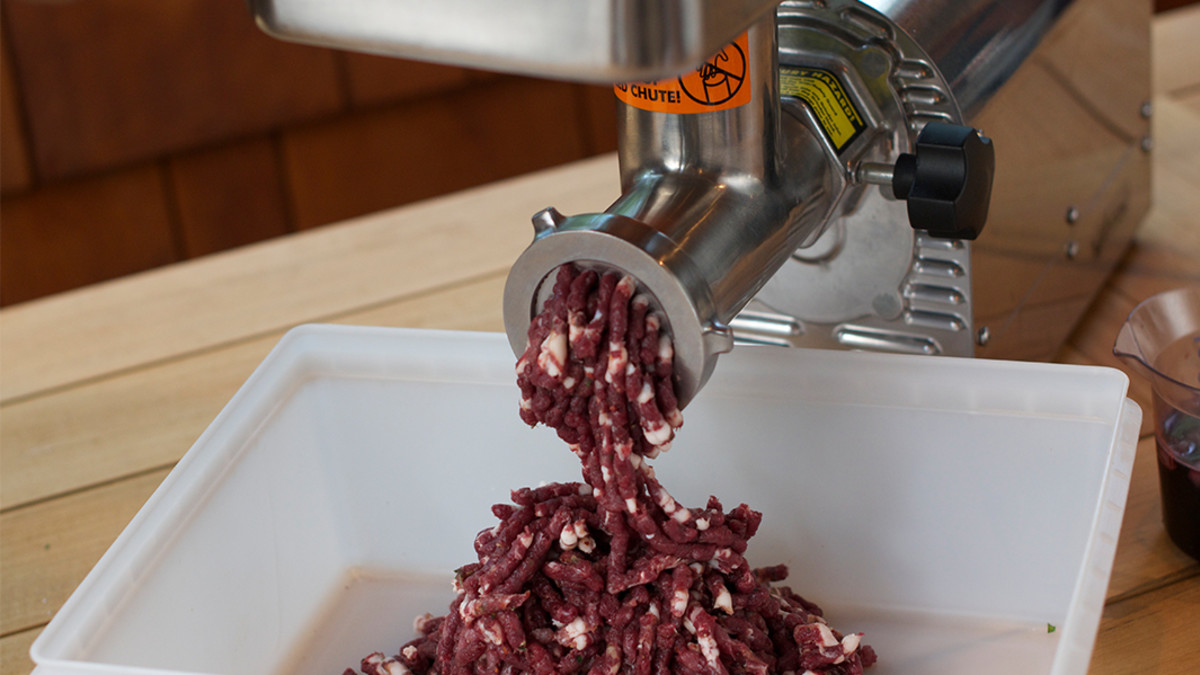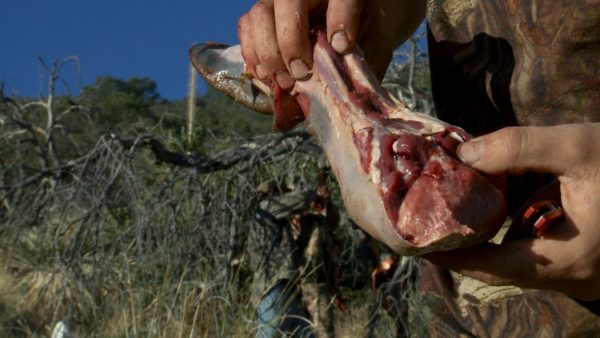
After the main cuts of meat are off of an animal it is time to decide what to do with the rest of the meat. Most of time grinding is the best option. This makes up a great majority of the meat you get from the animal you harvest, so it is important to know how to grind big game meat correctly.
When making ground meat from the flesh of horned and antlered game, it’s a good idea to add in some pork fat or beef fat. You can omit the fat, but you’ll need to add cracked eggs as a binder to make hamburger patties and meatballs; and even then, the ground meat will be a tad crumbly.
Tastes vary, with hunters preferring everything from 5% fat to 20% fat. For all-around use, a meat-to-fat ratio of 9:1 is ideal, with pork fatback being one of the best kinds of fat for the purpose.
The Process
- Trim the game meat of tendons, silver skin, and fat. Some butchers suggest removing absolutely all silver skin and tendons, but this leads to a greatly diminished volume of finished product. For instance, it pretty much rules out the use of rib meat. Instead, use your best judgment and trim away heavy concentrations of silver skin and tendons without getting so carried away that you’re tossing out 50% of the animal.
- Cut the trimmed venison into 1” cubes. Cut the pork or beef fat into 1” cubes. Blend the cubes of meat and fat together. Keep the meat and fat very cold while you work; it’s wise to place meat in a freezer or in a cooler filled with ice when you need to take a break from your work for cleaning, eating, etc.
- Run the meat and fat through a grinder using a coarse die plate with approximately 3/8” (9.5mm) holes.
- Thoroughly mix the ground meat to get the fat evenly distributed.
- Run meat through the grinder a second time, this time using a medium die plate with approximately 3/16 (4.5 mm) holes.
At this point, your meat is ready for packaging or cooking.
Slim Pickings

When butchering whitetail deer, you’ll find that there are several common cuts, including flank, hangar, brisket, and tongue, that are too small to use for anything besides making burger. On larger animals, though, these cuts are well worth going after.
Elk, moose, and buffalo all have enough of a brisket to make pastrami, and their flanks and hangars are generous enough to be used as fajita meat. The tongues, too, are worth salvaging. They can be boiled, or brined and smoked to make a delicious treat.
Fat to Scrap and Keep
The fat on antlered game such as deer and elk should be trimmed away during the butchering process. Unlike beef fat and pork fat, it is waxy and often has an off flavor that only gets worse in the freezer. The fat from buffalo, on the other hand, is quite good and adds significantly to the flavor and substance of the meat.
When grinding buffalo meat, in fact, it’s a good idea to cut the lean meat the buffalo’s own fat. The fat of bears and wild pigs can be used for making lard.





